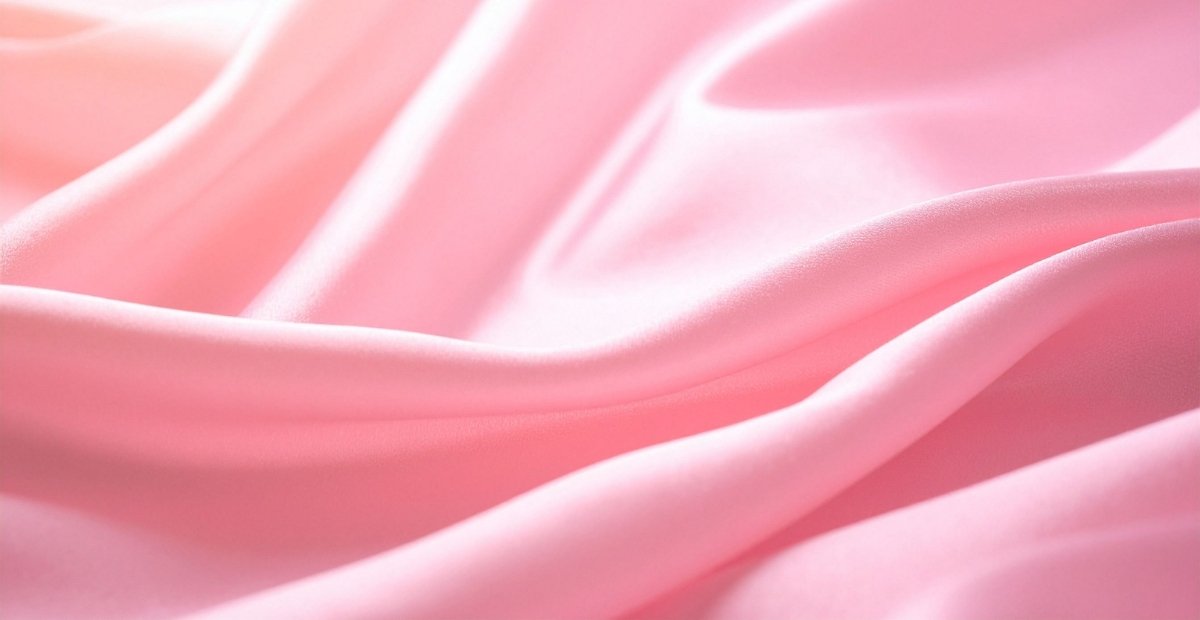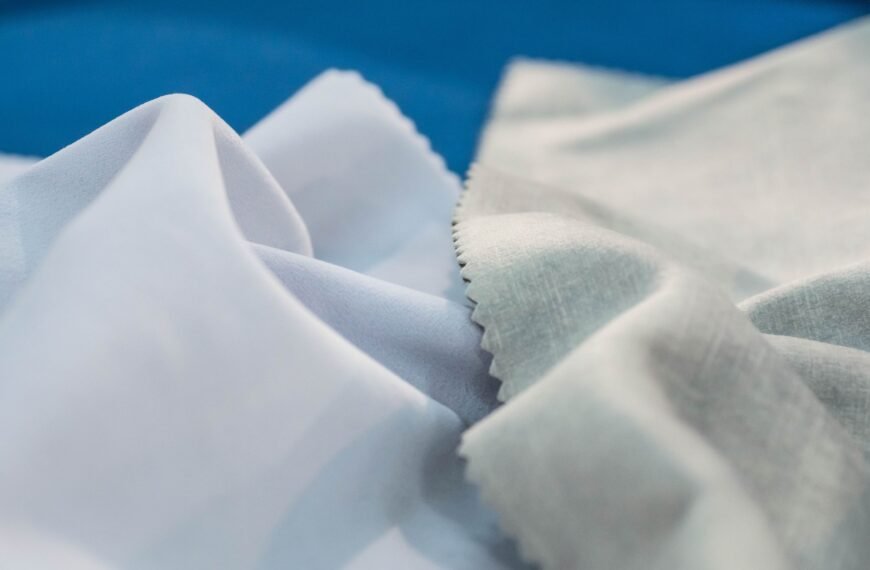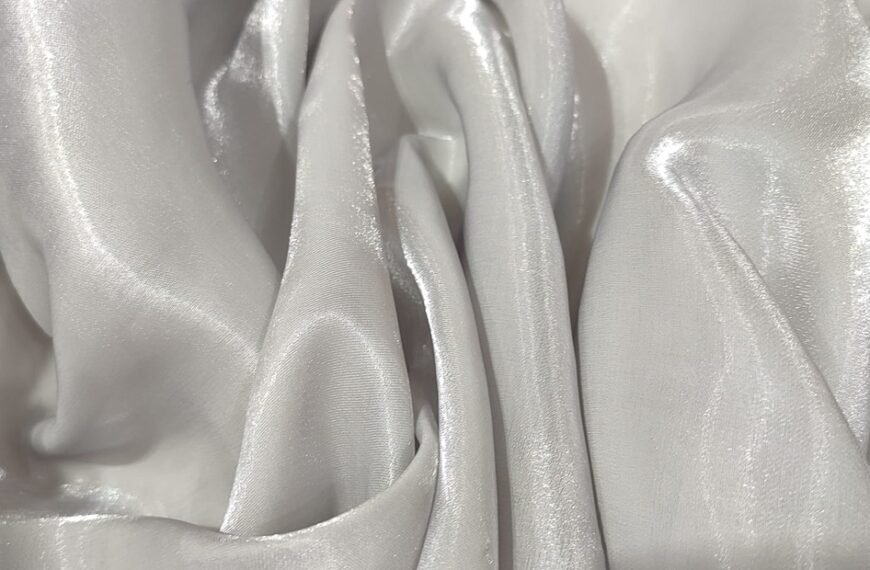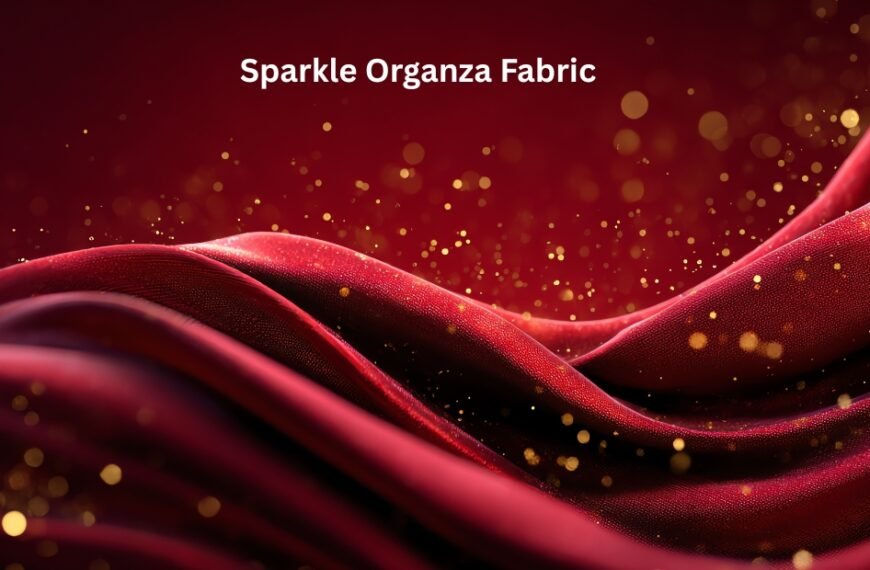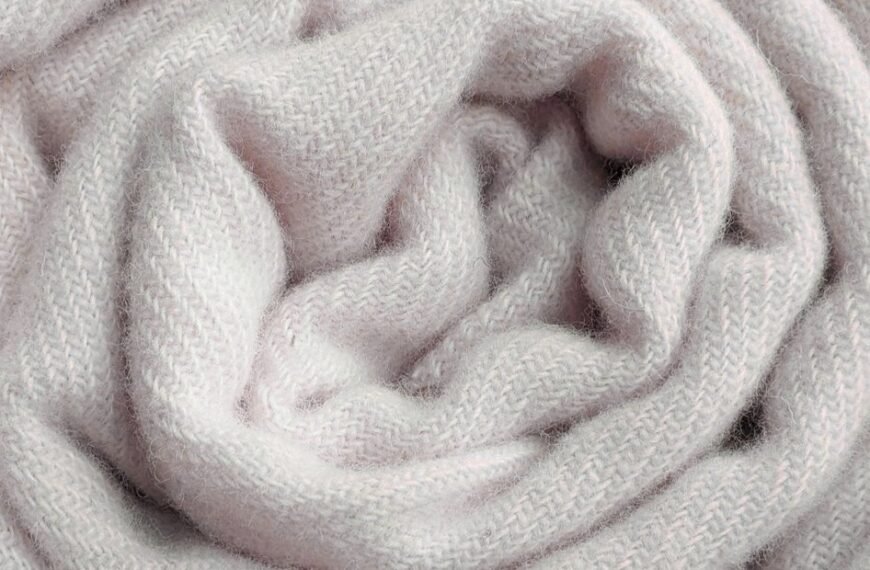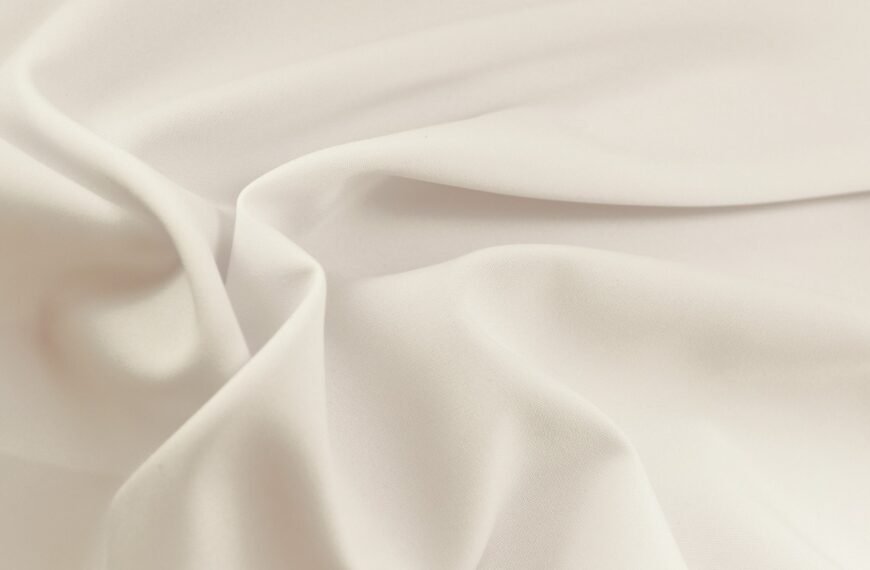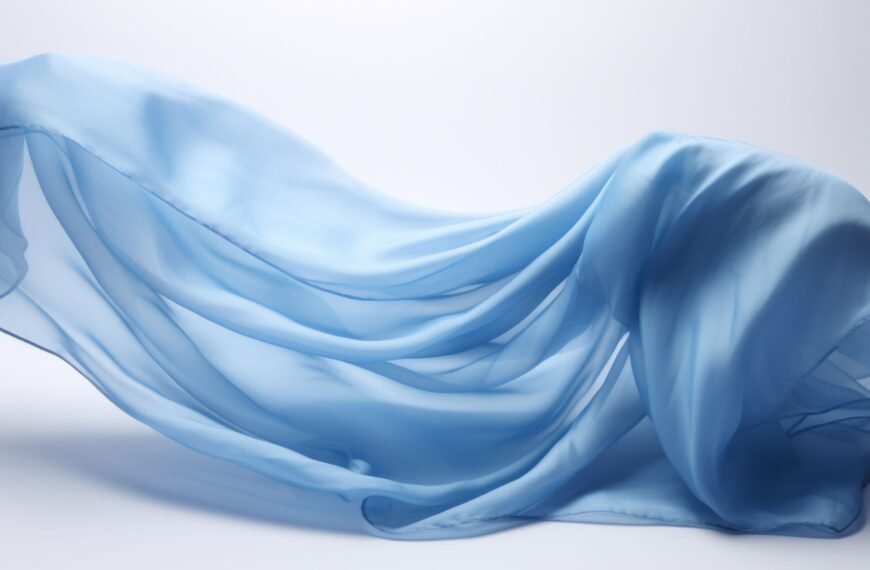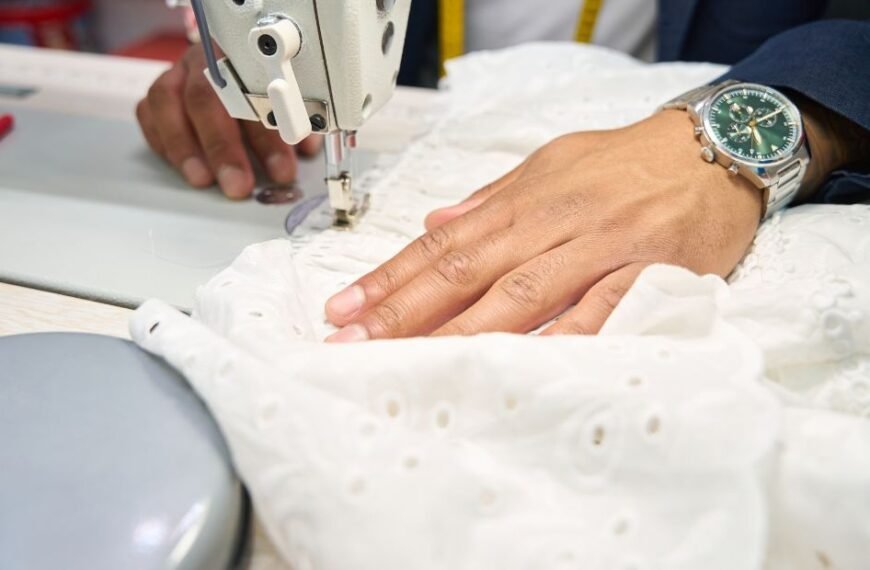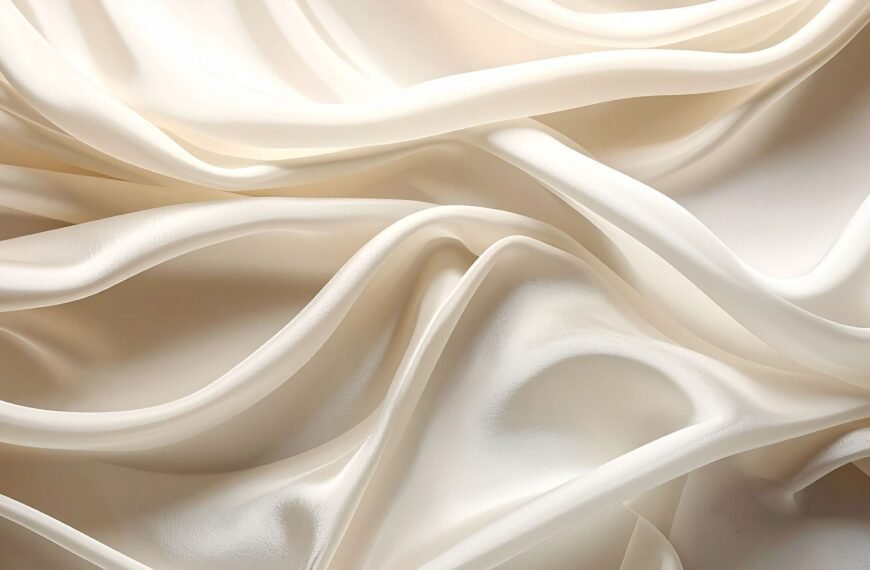The smallest of details can make a fashion statement. satin fabric is a material that stands out for its elegant, light and glossy look. Soft shimmering and firm drape add elegance to dresses and wedding gowns. It is a favorite among designers because it feels light but looks rich. This material is smooth to the touch and holds its shape well. This material can transform a simple look into a fashion statement. Its charm has made it a favorite fabric for luxury and elegant clothing.
- What is Satin Organza Fabric
- Origin and History
- Satin Organza Fabric Characteristics
- Why Satin Organza Fabric is Popular
- Satin Organza Fabric in Fashion Design
- Satin Organza for Bridal and Formal Wear
- Satin organza in cultural and traditional clothing
- Satin Organza Fabric in Home Decor
- How Satin Organza Fabric is Made
- Benefits of Satin Organza fabric
- The Challenges of Working with Satin Organza Fabric
- How To Care For Satin Organza Fabric
- Color and Dyeing Option
- Satin Organza in Modern Fashion Trends
- Combining Satin Organza Fabric with Other Materials
- Satin Organza for Events and Decorations
- How to identify Satin Organza Fabric
- Future of Satin Organza fabric
- Final Thoughts
What is Satin Organza Fabric
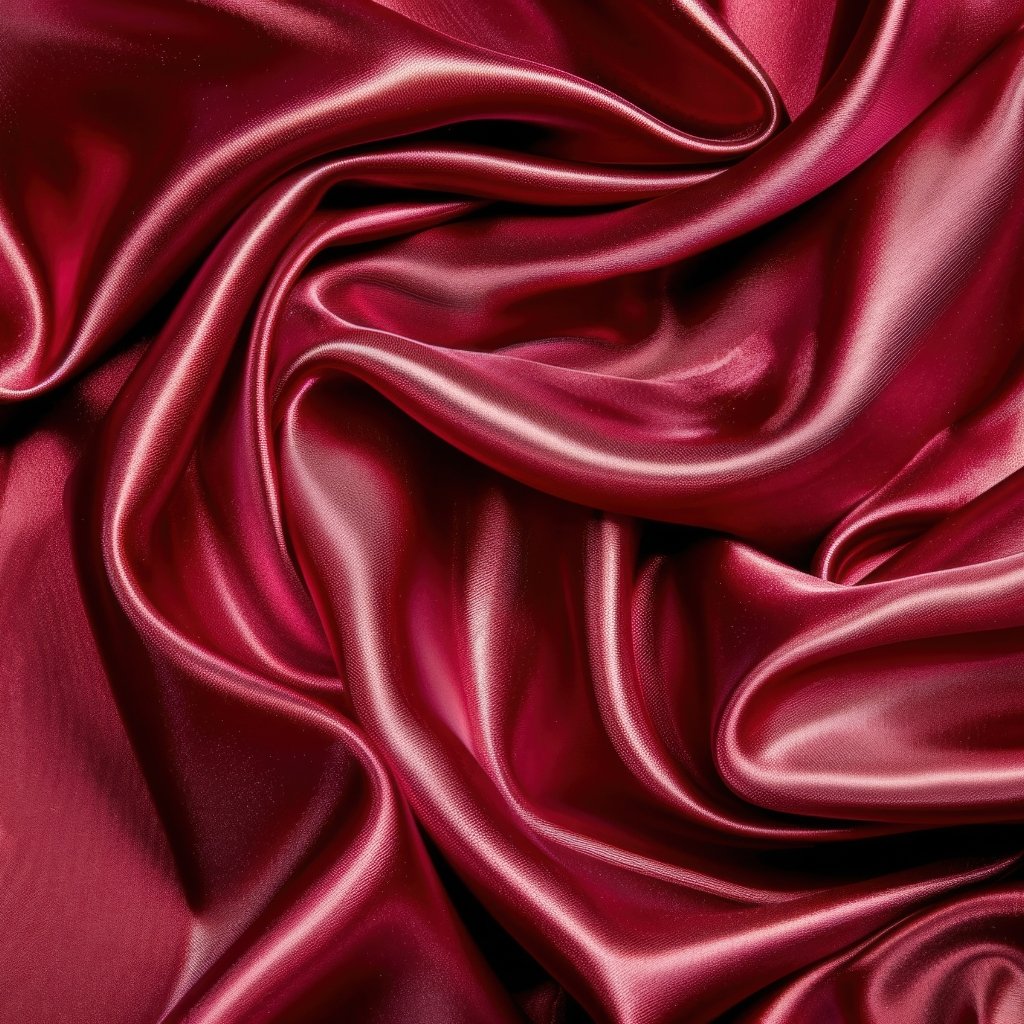
Each fabric has a unique story to tell about its texture and make. The satin organza fabric combines two weaves to create a beautiful fabric. The satin gives the fabric its glossy finish, while organza provides crispness and structure. This creates a textile that is fine, balanced and gleams in the light. It also holds its shape. This mix is popular among designers because it offers both softness and strength. The texture gives depth to the shine. The material feels luxurious, but it is still light enough to be used for delicate designs. read more…
Origin and History
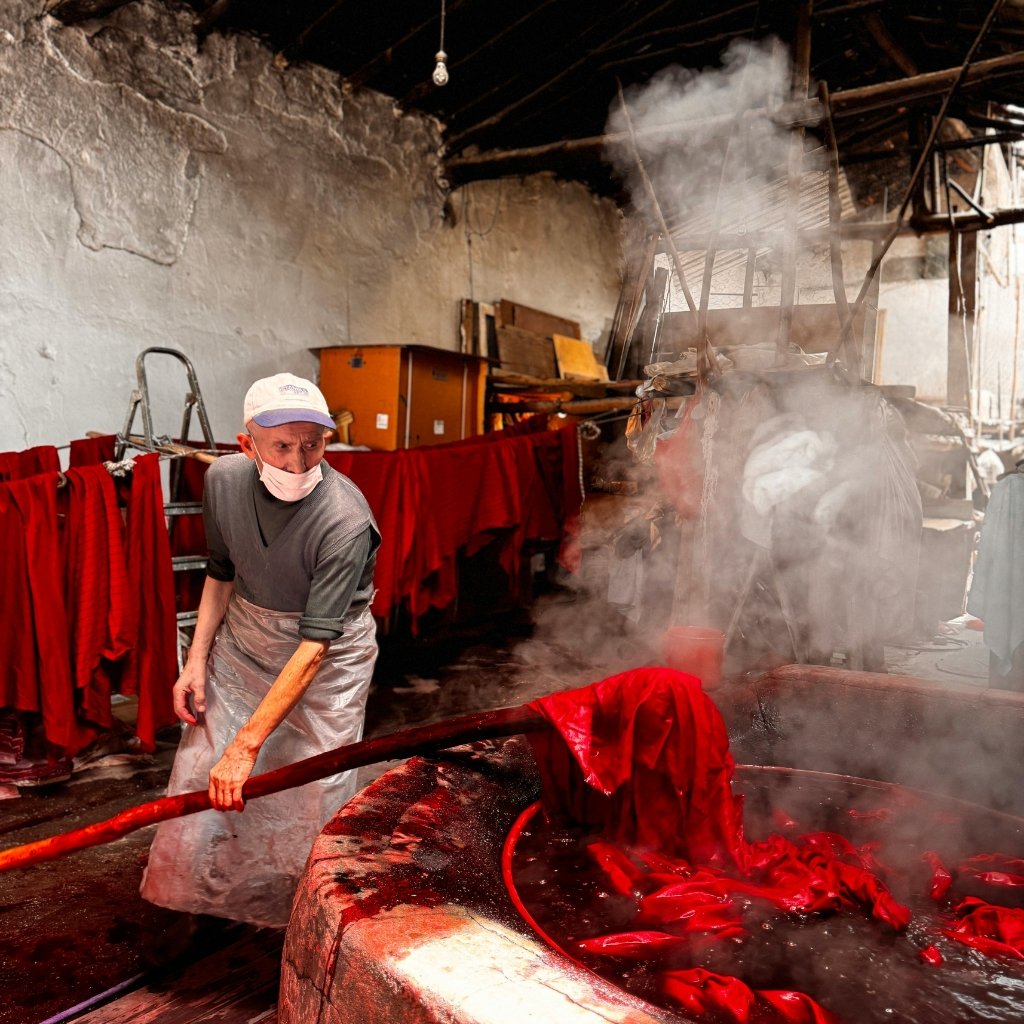
Textiles have evolved over centuries with the culture and skills. Satin Organza fabric is rooted in Asian and European tradition. In China, satin was first created from silk threads to give it a radiant finish. Organza was also a product of Asia and used for royal clothing because of its transparency. Later, European weaver merged the two weaving styles to create this luxurious fabric. This blend was used in bridal fashion, stage costumes and evening gowns. The history of this fabric reflects both artistic innovation and artistry in fabric design.
Satin Organza Fabric Characteristics
The beauty of Satin Organza Fabric is its dual nature. On one side it is smooth and glossy, while on the other it is crisp and sheer. It is perfect for flowing garments with structure. The weave allows for air to pass, which keeps it light and comfortable. It feels firm but smooth when touched. This helps the clothing retain its shape without being stiff. Its glossy surface gives every fold a touch of elegance, as it reflects light. These traits make it stand out both in fashion and decor, giving a modern, timeless look.
Why Satin Organza Fabric is Popular
Designers are always looking for materials that combine beauty and functionality. Satin organza fabric offers both. It’s durable, stylish and ideal for creating detailed pieces. It reflects so much light that it makes colors appear more vibrant. It is popular for bridal wear, luxury collections and other high-end garments because it adds sophistication without being heavy. The strength of the fabric makes it durable and long-lasting, adding value. The effect is always elegant and refined, whether it’s used to create layered skirts or drapes. The versatility of this fabric is the main reason for its popularity.
Satin Organza Fabric in Fashion Design
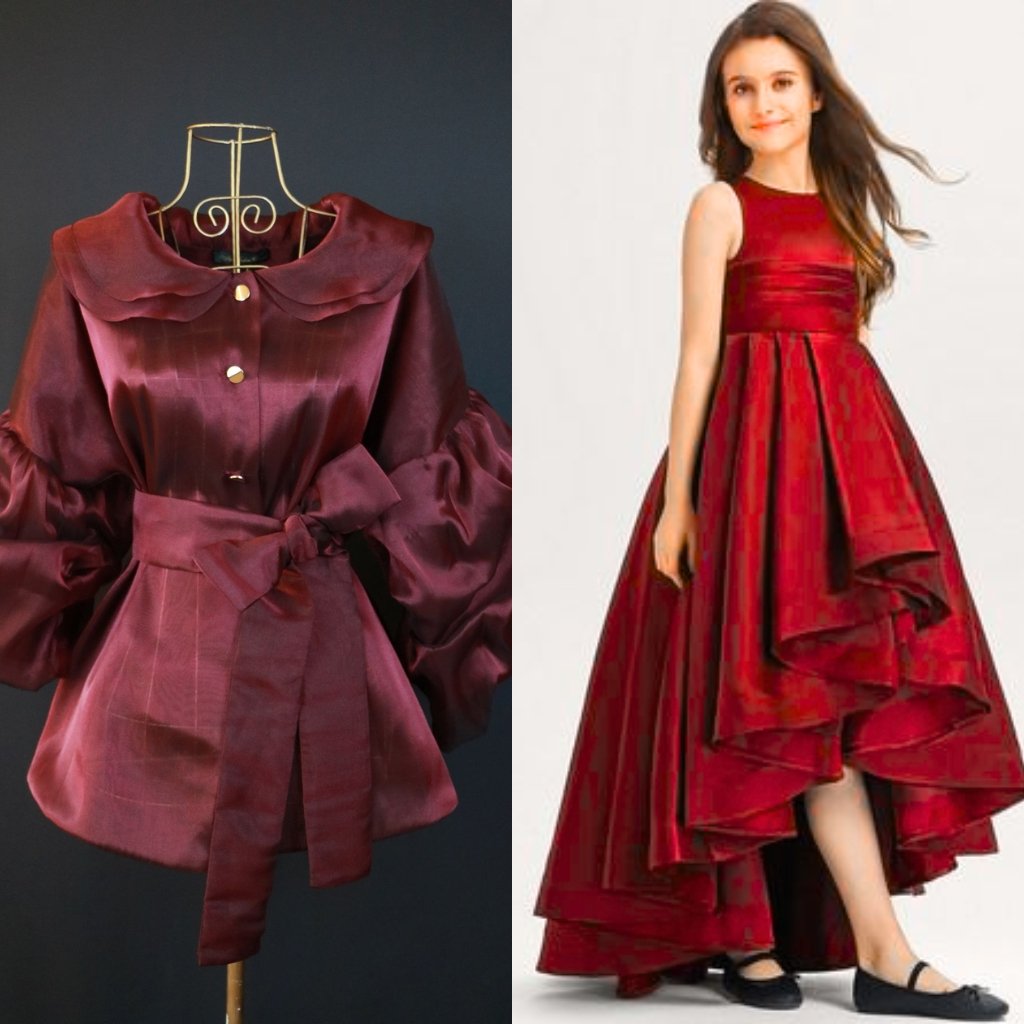
Fashion is a combination of imagination and texture. Satin organza fabric gives designers endless creative space. This fabric is perfect for gowns, blouses and formal wear. It drapes beautifully, allowing designers to play with transparency and volume. The shiny finish gives wedding dresses and evening gowns a royal look. It holds colors well and gives richness to light shades. This fabric is often layered on top of other materials to give them a shimmer. This fabric is used on many runways to elevate designs with elegance, movement, and a subtle glow.
Satin Organza for Bridal and Formal Wear
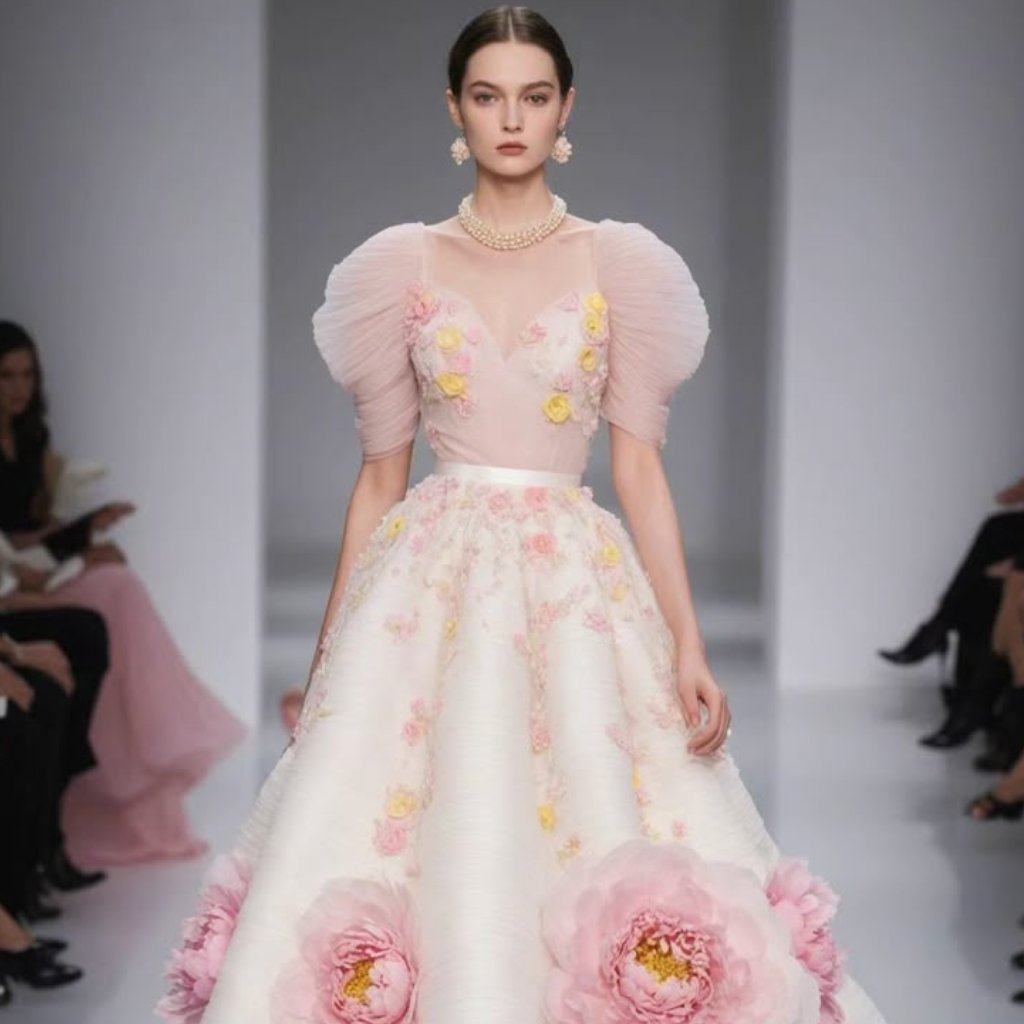
satin organza fabric is one of the few materials that can express romance like this. Brides from all over the world love its glow and movement. It adds body to wedding dresses without adding bulk. The structure of the material allows for soft pleats, flares and a fluid movement. It makes evening gowns look elegant and regal. Designers use it to create accents, long veils and sashes that reflect light beautifully. It’s frequently combined with sequins and lace because it is a fabric that holds embroidery well. This fabric is a beautiful, shimmering fabric that makes special moments even more magical.
Satin organza in cultural and traditional clothing
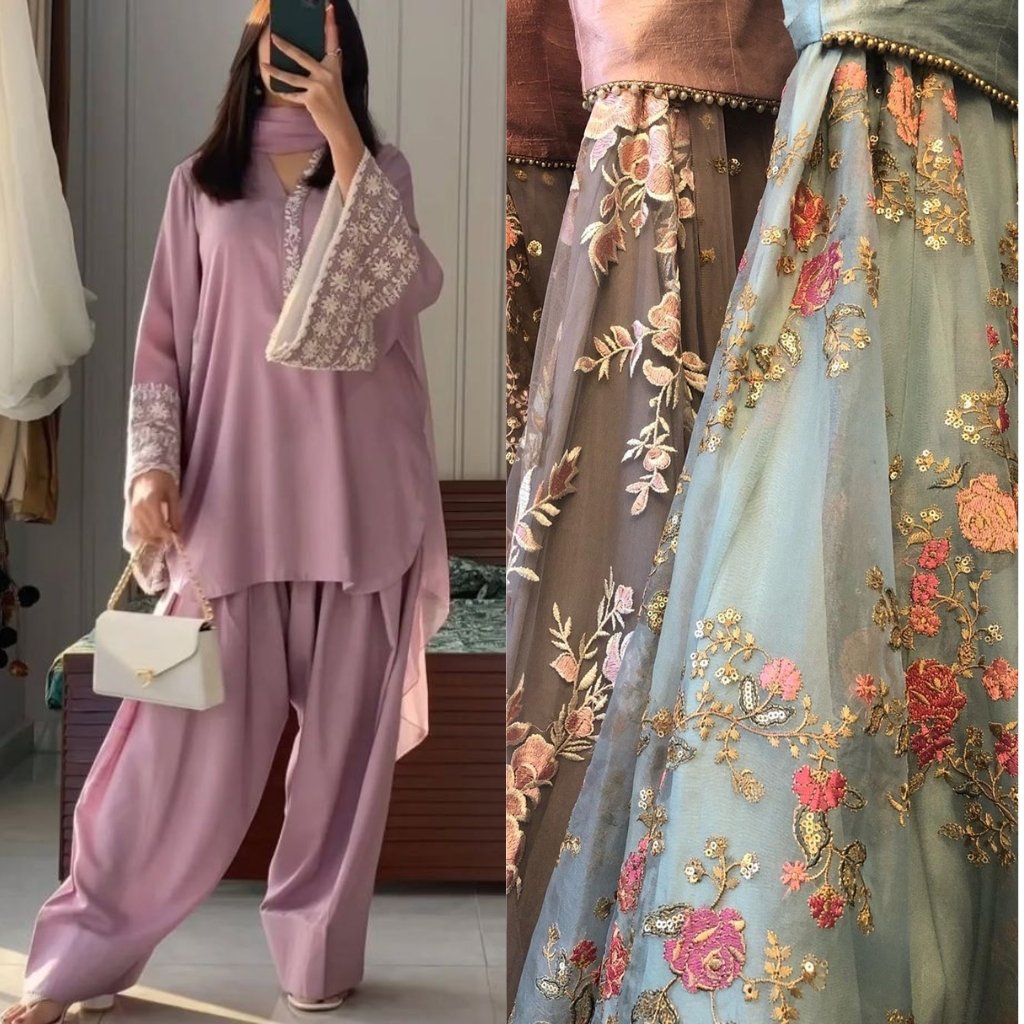
People value fabrics that are elegant in all cultures. Satin Organza fabric is used in many traditional outfits due to its rich, yet airy qualities. This fabric is commonly used in sarees and kimonos as well as festive gowns. The stiffness gives it shape, and the soft shine adds to its luxury. It is used by tailors to create overlays and dupattas to add depth to clothing. It is used in ethnic clothing of all kinds, including modern ones. Its blend of shimmer and lightness is perfect for celebrations, where elegance is key. The cultural impact of its popularity is a testament to how popular it has become.
Satin Organza Fabric in Home Decor
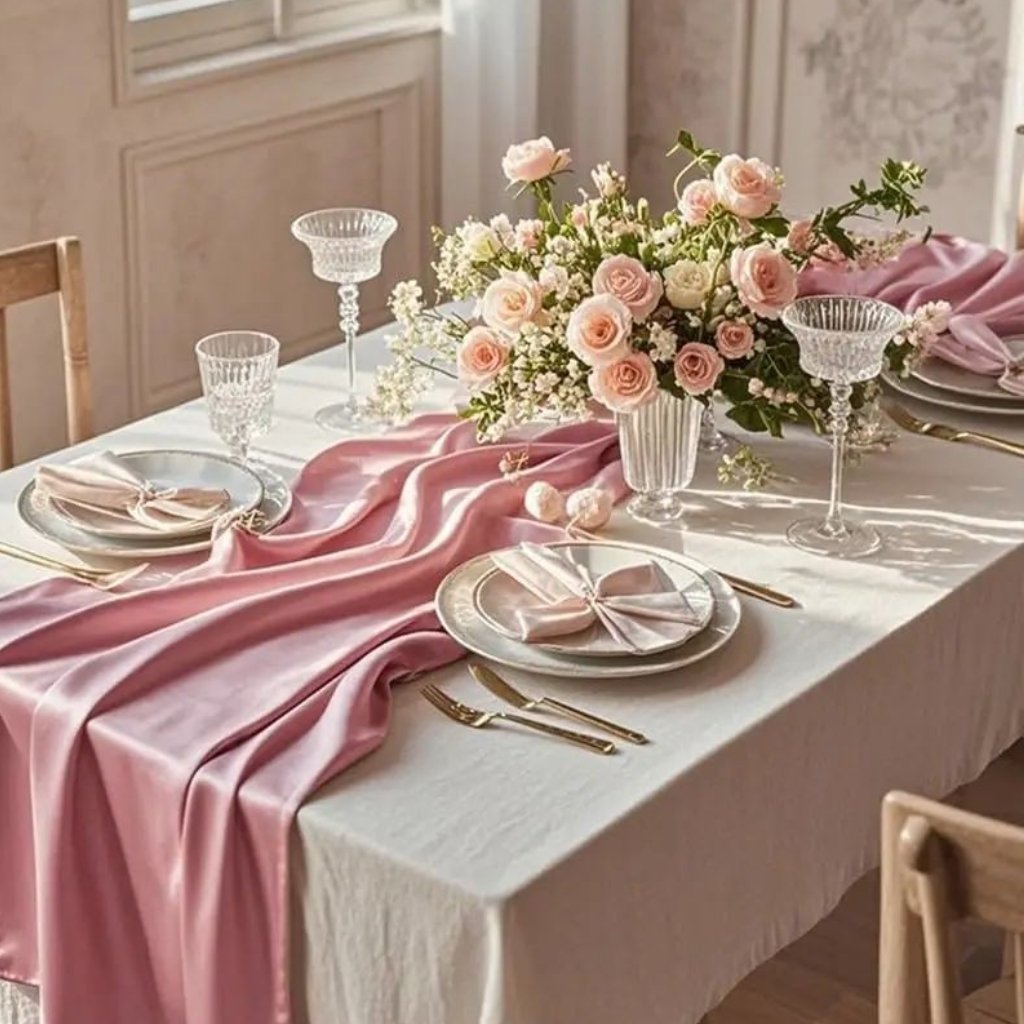
satin fabric is also popular in home design. This fabric adds luxury without being heavy. This fabric allows sunlight to filter through the curtains, creating a soft glow. This fabric is also used as table decor, for cushions and drapery at events. It stays in shape and resists wrinkles because it holds its shape. The subtle sheen makes any interior inviting. Decorators use it to give spaces a richer look while maintaining a light, open feel. Its beauty is suitable for both classic and modern homes.
How Satin Organza Fabric is Made
To make satin organza, requires careful weaving. The satin weave uses long, floating yarns to reflect light. Organza plain weave gives it a crisp, clean structure. Combining the two results in a textile that is translucent and firm. The fabric can be made of silk to give it a luxurious feel, or polyester for durability and a lower price. The threads are tightly weaved to maintain strength and sheen. The threads are treated to add luster and softness after weaving. This process requires patience, skill and attention to details. The final product feels premium and refined.
Benefits of Satin Organza fabric

Its qualities are what makes satin fabric so special. It is light, but durable. It’s perfect for layering dresses and ruffles because it holds its shape. The surface is smooth and resists dust, keeping colors vibrant. It doesn’t fade under soft lighting when used for decor. It also works well with embroidery and embellishments. Designers are able to create fine details with no loss of fabric strength. The shine of the fabric brings life to simple forms, while its body keeps designs in place. It is truly unique because of its combination of beauty and functionality.
The Challenges of Working with Satin Organza Fabric
satin fabric is beautiful, but it requires careful handling. Beginners may find it difficult to sew due to its smooth texture. To prevent pulling, needles must be sharp and stitches gentle. The tight weave can fray if the edges are not secured. Low heat is required to iron, as excessive heat can dull the shine. Nevertheless, with enough practice and skill, tailors can do it effortlessly. Once the technique is mastered, results are always impressive. It is worth it to overcome the small challenges because they will bring you unmatched grace. Designers know that beauty is often achieved with extra care.
How To Care For Satin Organza Fabric
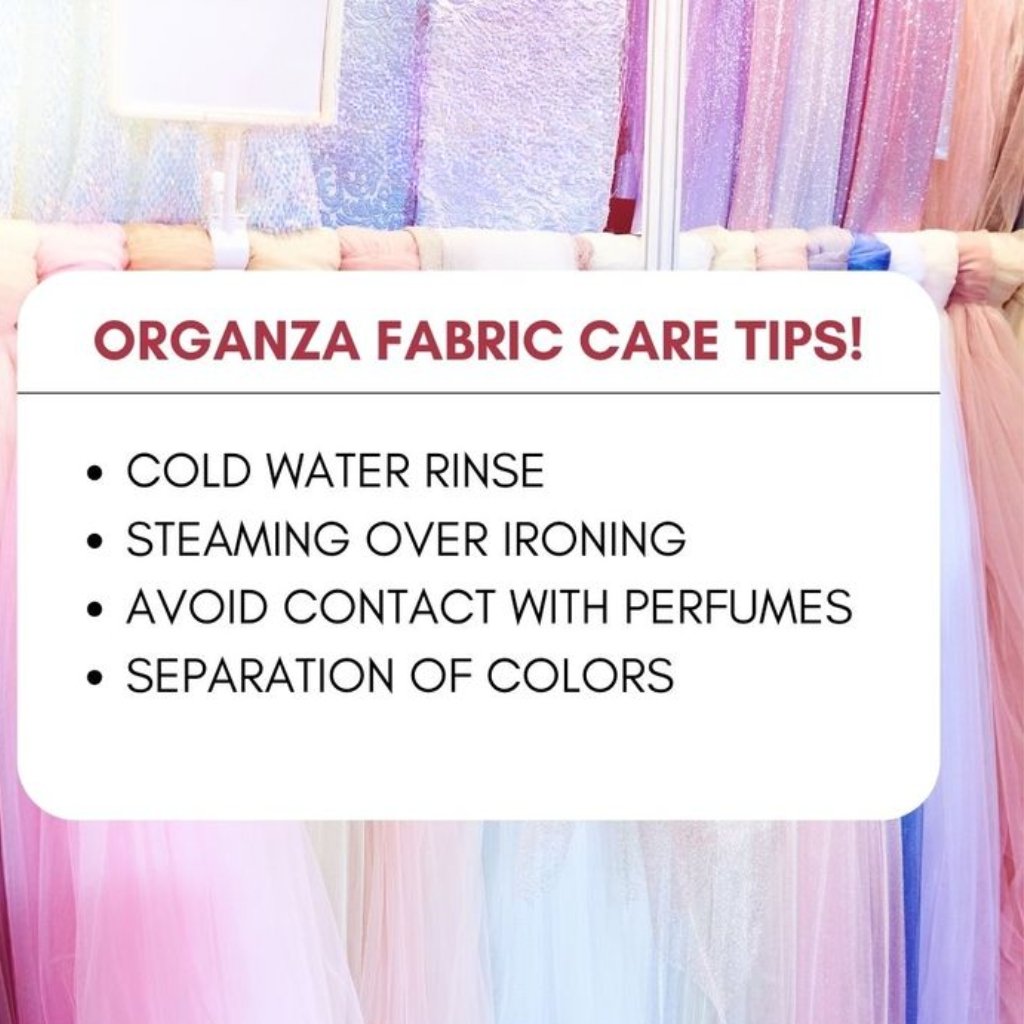
satin fabric can be kept beautiful for many years by taking care of it. Dry cleaning or gentle hand washing is the best option. Hot water or harsh chemicals can damage the fibers. It’s best to let the air dry your clothes by hanging them in the shade. Soft light is preferable to direct sunlight, which can fade colors. Ironing with low heat and using a cloth to protect the surface will preserve its glossy finish. It is best to store it flat on hangers or on padded ones. The material will remain bright, elegant, and firm for many years with such simple steps.
Color and Dyeing Option
Color enhances the beauty of Satin Organza Fabric. The glossy finish makes the shades look richer. Every tone, whether pastel or bold shines with softness. This material is a favorite of dyers because it absorbs colors evenly. Silk versions have a natural, luxurious sheen. Synthetic versions can also be luminous, but they may reflect the light in a different way. It is perfect for creating layered designs where the color interacts with the light. The variety of looks that can be created with this fabric is endless. From vibrant jewel tones to bridal white, there are many options.
Satin Organza in Modern Fashion Trends
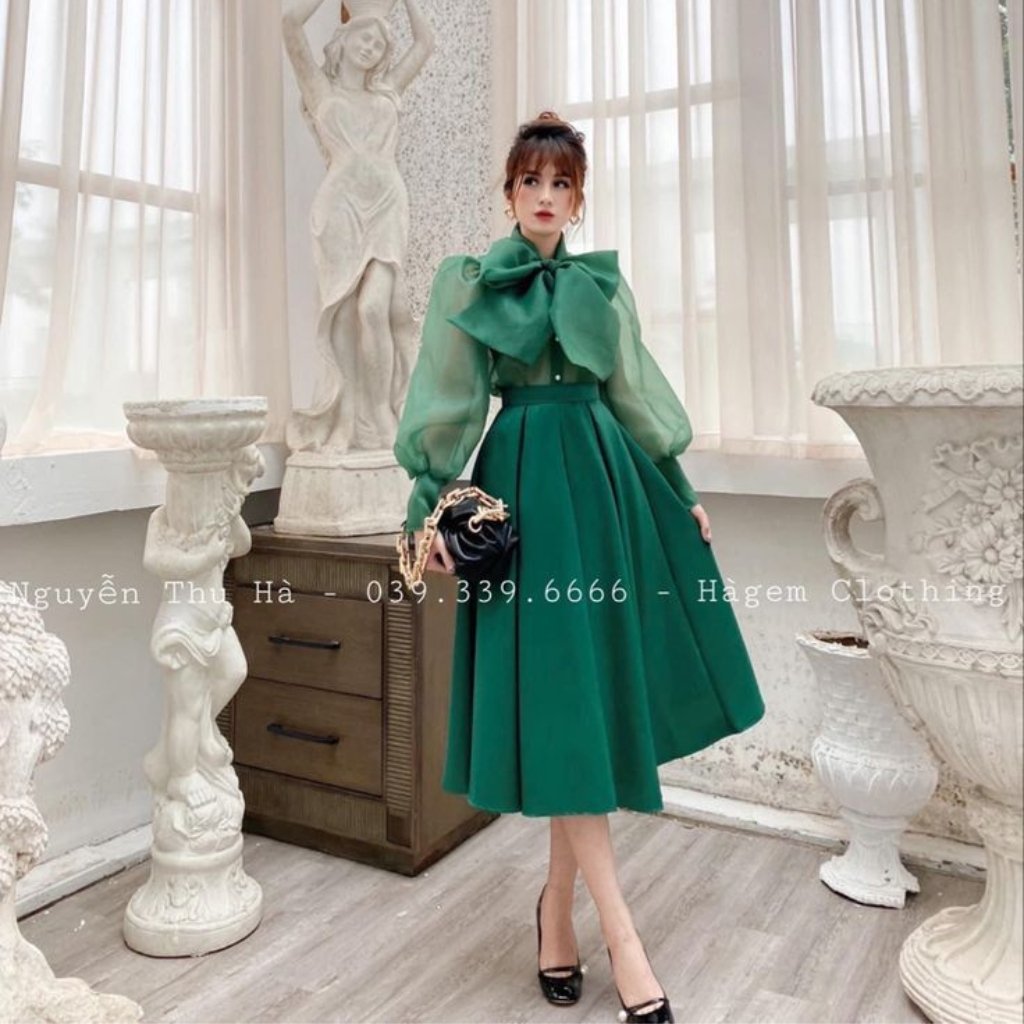
satin Organza Fabric is perfect for this. Designers use this fabric not only to create gowns but for tops, skirts and casual accents. Transparency allows for creative layering and shine adds modern elegance. The airy, yet dramatic design has been featured on many global fashion runways. Many people use eco-friendly versions of natural fibers because sustainability is important now. These modern uses show that elegance is timeless, especially when combined with innovation and handcrafted craftsmanship.
Combining Satin Organza Fabric with Other Materials
Designers mix fabrics to create texture and depth. Satin Organza fabric looks great with velvet, chiffon or lace. Each combination creates a unique mood. Mixing it with chiffon will soften the structure while adding romance. Velvet creates contrast by combining matte and glossy tones. Blending organza and cotton or silk in decor will enhance both comfort as well as shine. These combinations create looks that are stylish and feel new. Satin organza is versatile and timeless because it can be paired with so many different materials.
Satin Organza for Events and Decorations
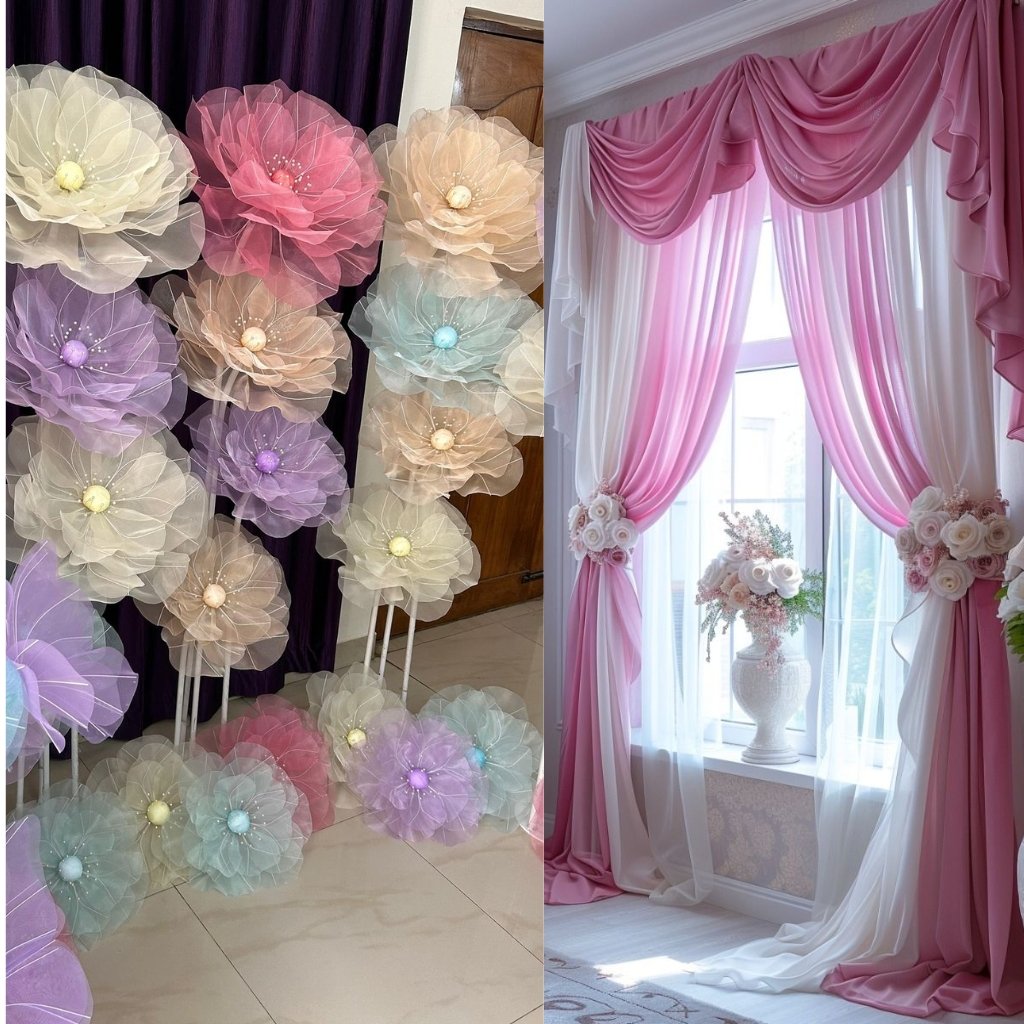
Fabrics that are unique and stand out can be used for large events. Satin Organza Fabric adds a festive touch with ease. You can use it to decorate stages, cover tables or drape halls. It adds a glow to any event because it reflects the light. Wedding planners use it to create backdrops that are elegant and royal. Florists use it as a wrap for bouquets to give arrangements a rich look. Due to its gentle stiffness, the fabric holds perfectly folded and shaped bows. It looks beautiful in every piece of decor, proving that the beauty is often found in small details.
How to identify Satin Organza Fabric
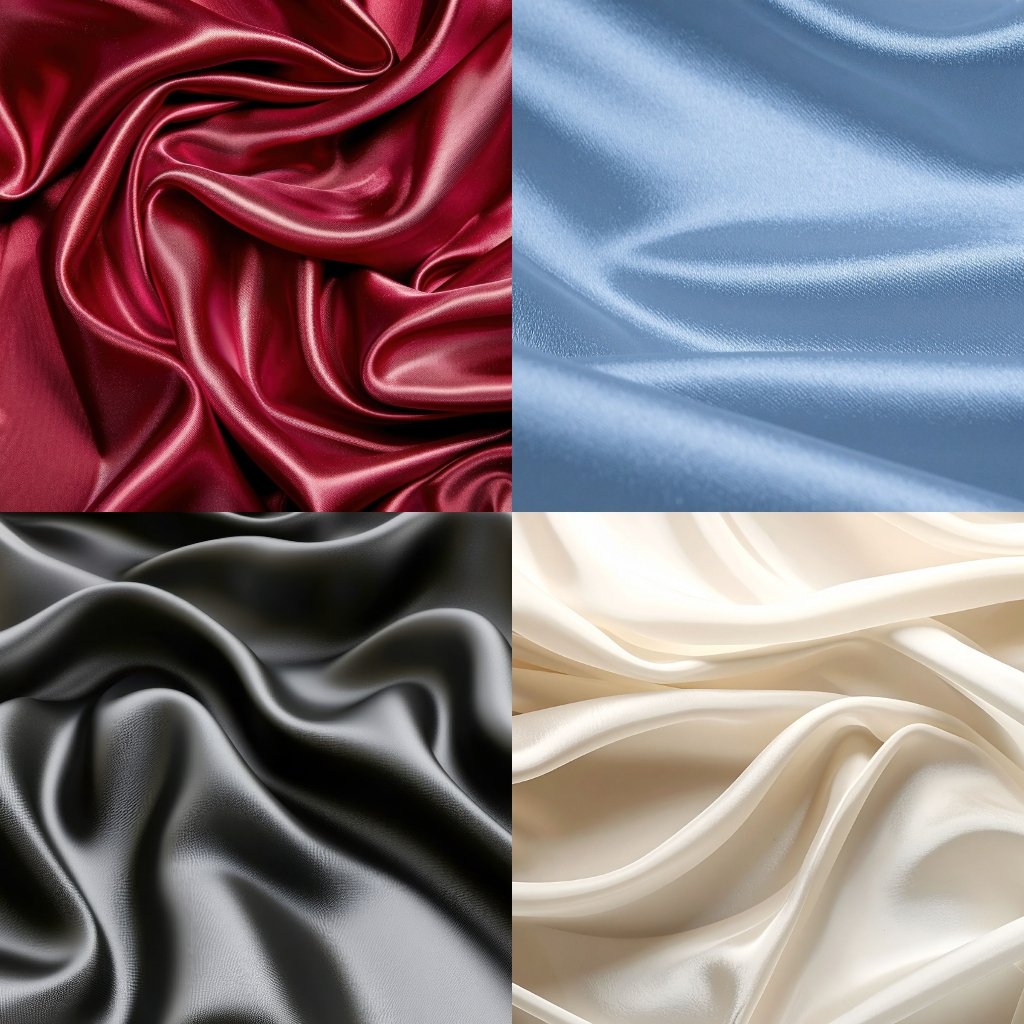
Fashion is all about knowing what you’re wearing. The high-quality organza satin fabric is smooth and crisp. It should be able to shine under the light, but not be slippery. It should be able to stand up without sagging when held. The weave should be tight with no loose threads and an even gloss. Silk has a warm, natural feel. Synthetics are cooler. Quality is revealed by both touch and sight. The best investment is the key to ensuring beauty for a long time, especially when it comes to special clothing and decor. The right fabric is the key to true elegance.
Future of Satin Organza fabric
The future for satin fabric is bright, as the trend moves towards light luxury. It is now even softer, and more sustainable thanks to new weaving technologies. Designers are now exploring blends of recycled fibers with the same sheen. Digital printing allows for unique patterns to be printed on the fabric, adding a modern touch to classic designs. This fabric continues to evolve with each new advancement without losing its unique identity. This fabric is a favorite of those who want shine, comfort and structure all in one. The future of this material lies in the balance between tradition and innovation.
Final Thoughts
Fabric choice is often the first step in creating a beautiful look. Satin Organza Fabric is proof that elegance doesn’t have to be difficult. Its softness, structure and glow make it a favorite among generations. It adds elegance to any project, whether it’s a gown or a room. Designers choose it because of its ability to tell stories through light and movement. It is a material that requires gentle care but will last many years. It will forever be one of the most beautiful materials in fashion, cherished for its timeless beauty.
1. What is satin organza fabric?
Satin organza fabric is a lightweight, glossy material made by blending satin’s shine with organza’s crisp texture. It’s often used in luxury fashion and décor.
2. Is satin organza fabric good for summer wear?
Yes, satin organza fabric is breathable and airy, making it suitable for summer dresses and lightweight formal outfits.
3. Can satin organza fabric be washed at home?
It’s best to hand wash satin organza fabric gently or dry clean it. Hot water and strong detergents can damage its shine.
